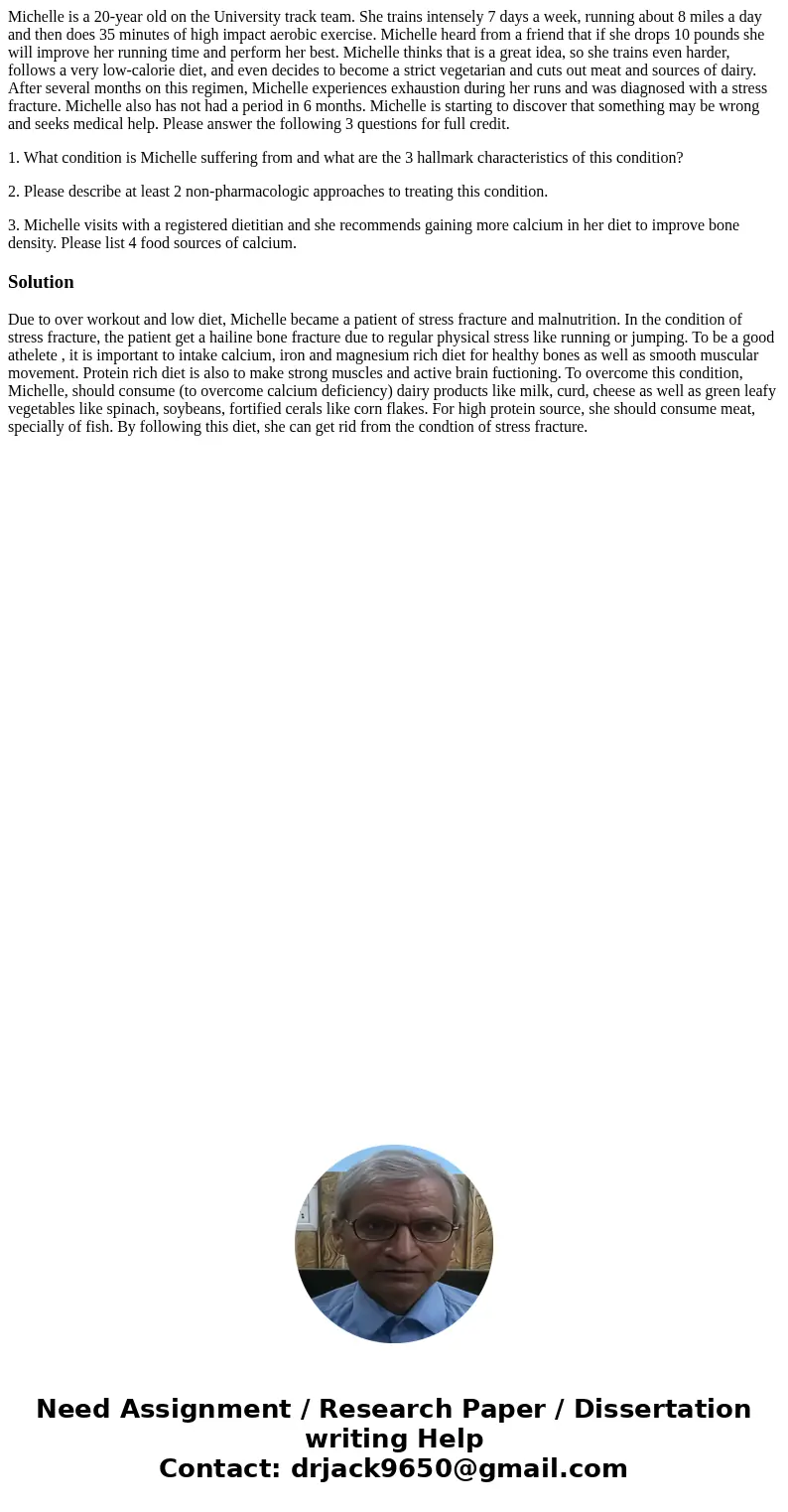Michelle is a 20year old on the University track team She tr
Michelle is a 20-year old on the University track team. She trains intensely 7 days a week, running about 8 miles a day and then does 35 minutes of high impact aerobic exercise. Michelle heard from a friend that if she drops 10 pounds she will improve her running time and perform her best. Michelle thinks that is a great idea, so she trains even harder, follows a very low-calorie diet, and even decides to become a strict vegetarian and cuts out meat and sources of dairy. After several months on this regimen, Michelle experiences exhaustion during her runs and was diagnosed with a stress fracture. Michelle also has not had a period in 6 months. Michelle is starting to discover that something may be wrong and seeks medical help. Please answer the following 3 questions for full credit.
1. What condition is Michelle suffering from and what are the 3 hallmark characteristics of this condition?
2. Please describe at least 2 non-pharmacologic approaches to treating this condition.
3. Michelle visits with a registered dietitian and she recommends gaining more calcium in her diet to improve bone density. Please list 4 food sources of calcium.
Solution
Due to over workout and low diet, Michelle became a patient of stress fracture and malnutrition. In the condition of stress fracture, the patient get a hailine bone fracture due to regular physical stress like running or jumping. To be a good athelete , it is important to intake calcium, iron and magnesium rich diet for healthy bones as well as smooth muscular movement. Protein rich diet is also to make strong muscles and active brain fuctioning. To overcome this condition, Michelle, should consume (to overcome calcium deficiency) dairy products like milk, curd, cheese as well as green leafy vegetables like spinach, soybeans, fortified cerals like corn flakes. For high protein source, she should consume meat, specially of fish. By following this diet, she can get rid from the condtion of stress fracture.

 Homework Sourse
Homework Sourse